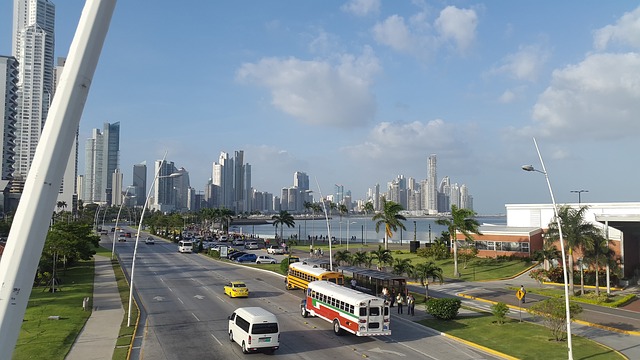By Tim Lambert
The first human beings lived in Panama about 11,000 BC. By 2,500 BC they had learned to make pottery and later people from the region traded with others as far north as Mexico and as far south as Peru.
The first European to land in Panama was a Spaniard named Rodrigo Galvan de Bastidas in 1501. The first Spanish settlement in Panama was made in 1510. Then on 25 September 1513, Vasco Nunez de Balboa became the first European to see the Pacific Ocean (which he called the South Sea and which he claimed for Spain). Then in 1519, Pedro Arias de Avila founded Panama City.
Meanwhile, the indigenous people were decimated by European diseases, to which they had no resistance. The survivors were enslaved. The Spanish introduced a kind of feudal system in which the indigenous people were forced to work on estates.
When Pizarro conquered the Incas in 1533 Panama became a transit point for gold on its way from Peru to Spain. The precious metal was taken overland by mules from the Pacific Coast to the Atlantic Coast.
However, the great riches in the area attracted the attention of the English. In 1572 Francis Drake raided Nombre de Dios. In 1671 a Welshman named Henry Morgan burned Panama City. It was rebuilt in a new location several kilometers away in 1673. Finally, in 1746 the treasure route was changed. From then on it was taken by sea around the Cape Horn.
Panama became independent from Spain on 28 November 1821. At first, Panama was part of a superstate called Gran Colombia, which consisted of Panama, Colombia, Ecuador, Peru, Bolivia, and Venezuela. However, Gran Colombia soon broke up but Panama remained joined to Colombia.
In 1846 the USA negotiated a treaty to build railways across Panama. A new railway across the Isthmus was completed in 1855. The French made the first attempt to dig a canal across Panama. Work on the scheme began in 1881 but the company went bankrupt in 1889.
In 1899-1902 a civil war was fought in Colombia (which included Panama). It was called The War of the Thousand Days.
On 3 November 1903, Panama became independent from Colombia, encouraged by the USA. President Theodore Roosevelt was keen to dig a canal across Panama. The USA signed a treaty with Panama giving them sovereign rights over the canal zone. Work began on the canal in 1904. A huge force of migrant workers from many different countries were brought to Panama to work on the canal and many of them died of diseases like yellow fever. Nevertheless, on 7 January 1914, the first ship sailed through the Panama Canal. The Panama Canal was officially opened by President Woodrow Wilson on 12 July 1920.
Afterward, Panama was an oligarchy, ruled by several rich families.
A new treaty between the USA and Panama was signed in 1936 but resentment about US rights over the canal zone grew. Finally, on 9 January 1964 students rioted in Panama. Twenty people were killed in the riots. (9 January is now Martyrs Day in Panama.)
Then in 1968, an army coup overthrew the elected president, Arnulfo Arias. Afterward, General Omar Torrijos became the leader of Panama. In 1977 he succeeded in persuading US President Carter to sign a treaty that would give Panama complete control of the canal by 31 December 1999.
Torrijos was killed in a plane crash in 1981. In 1983 he was replaced by Manuel Noriega. Noriega introduced a repressive regime. However, relations with the USA deteriorated. In 1987 the USA began economic sanctions. Then in 1988, Noriega was indicted on drug charges in the USA. In 1989 presidential elections were held in Panama and they were won by Guillermo Endara. However, Noriega simply annulled the results of the election.
Finally, on 20 December 1989, the USA invaded Panama. They bombed Panama City. However, on 25 December 1989 Noriega took refuge in the Vatican embassy. He was captured in January 1990.
Meanwhile, Guillermo Endara, the winner of the 1989 election was made president of Panama. In 1994 he was replaced by Ernesto Perez Balladares. Then in 1999, Mireya Moscoso became the first female president of Panama.
Also in 1999, the Panama Canal was handed over to Panama. In 2004 Martin Torrijos became president. Then in 2009, Ricardo Martinelli became president of Panama. Between 2007 and 2016 a new project enlarged the Panama Canal.
Today Panama is a rapidly developing country and it has a bright future. In 2023 the population of Panama was 4.5 million.

Last revised 2025